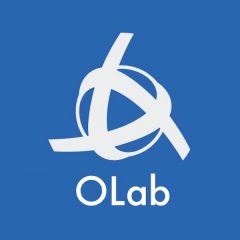How to light their fire with PiHPES and CIGARS
Background:
At the risk of giving everyone lung cancer, we want to show you how to use PiHPES (Precision in Health Professions Education Scholarship), our integrated platform; and CIGARS (Context Identifier Generation And Referral Service) for providing context metadata across multiple activities.
Continuing the slightly morbid theme, we describe how to create context-aware scenarios (CASKETs: Context Aware Scenarios for Knowledge and Education Transfer), that make best use of the various functions available from several open-standard educational tools.
Why do we need context?
Rather than trying to do everything within a single monolithic system (in which big vendors, like Adobe, would love to entrap you), we try to take advantage of open-source, open-standard tools in our learning designs. Use the best tool for the particular purpose or learning objective.
By using activity streams, pulled into a common Learning Records Store (LRS), which is a much more flexible approach than prior SCORM (or similar) integration mechanisms, we can still use powerful learning analytics tools, all pointed at an intermediary dataset. But we still need to filter out just those learning activities which are relevant to the scenario at hand.
If we only had to follow a single learner, the ‘actor identifier’ should be sufficient if that identifier is consistent across systems. (Practice has shown this to be unreliable.) But health professional education and practice is a team-based sport. When multiple players collaborate, across multiple tools in a scenario, you need better metadata to describe and identify the context of these activities.
What does CIGARS do?
CIGARS is a means to track what your teams of learners actually do within a CASKET of activities. By providing a context-identifier to the LRS, all of those activities are flagged as being relevant to that CASKET.
Every action, response and click is captured by the LRS, across all of the tools within PiHPES. This affords a much richer approach to assessing how your learners interact with the CASKET materials, rather the limited completed/pass/fail data that is provided by SCORM.
CIGARS is not a control mechanism. It does not force learners to follow a rigid path or constrain their use of learning resources. If you wish to enforce such control upon your learners, there are other excellent systems out there, such as LAMS, but in our experience, such tight-coupling between systems usually makes the scenario stiff and friable.
How do I use CIGARS?
- If you are the first, or only, learning designer to work on this CASKET, login to https://cigars.olab.ca and create a new CASKET.
- If a CASKET has already been started, use CIGARS to look it up and grab the context-identifier metadata.
- When creating the new CASKET, provide enough metadata to describe what you are trying to do, so that other collaborating designers can find it when they login to CIGARS.
- PiHPES will need to know where to send your learners when they start a CASKET.
- Remember that you can point them at any one of several tools.
- While it may not always be crucial to complete activities in a particular sequence, it is helpful to have a defined starting point.
- If you wish to control who can access your CASKET, you will need to send your learners to a tool that can provide Identity and Access Management (IAM) services.
- See here for more on IAM
- Moodle is commonly used within PiHPES to provide IAM but you can alter this.
- To improve convenience for learners, it is better to use a single-sign-on approach across your tools (you may need help from your tech team on this).
- PiHPES provides IMS-LTI and OAuth for such single-sign-on.
- In the links that lead your learners from one tool to another, include the context identifier metadata. CIGARS can generate this for you.
Examples

